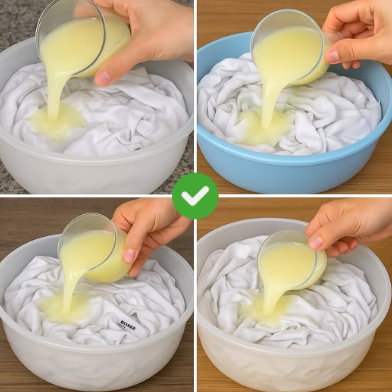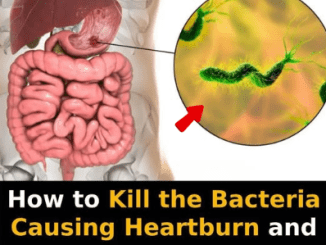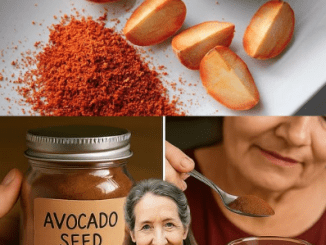
White clothes have a way of making us feel fresh, crisp, and put-together—until they start to lose their brightness. Most people immediately reach for bleach to bring back that dazzling white, but here’s the truth: bleach is not the best solution. While it may work quickly, it comes with downsides for your clothes, your health, and the environment. The good news? You don’t need it. With natural, eco-friendly alternatives, you can keep your whites looking radiant without harsh chemicals.
Why It’s Time to Ditch the Bleach
Bleach is often marketed as the ultimate fix for dingy whites, but over time it does more harm than good. Frequent use weakens fibers, making fabrics brittle and more likely to tear. Synthetic fabrics like polyester can even turn yellow when exposed to bleach. Beyond that, bleach contributes to water pollution and can cause skin or respiratory irritation. If you’ve ever felt overwhelmed by its chemical odor, your body is already telling you something.
So why risk it when there are safer, affordable, and equally effective ways to whiten clothes naturally?
White Vinegar: The Gentle Brightener
White vinegar is a powerhouse in natural cleaning. In laundry, it helps break down detergent residue, deodorizes fabrics, and restores brightness—all without damaging fibers. It’s also gentle on sensitive skin, making it a safe option for everyone in the family.
How to use it: Add ½ to 1 cup of white vinegar to your washing cycle along with your regular detergent. For stubborn underarm or collar stains, apply vinegar directly to the spot, let it sit for an hour, and then wash as usual. Pair it with lemon juice for a fresh, citrusy scent.
Baking Soda: The Natural Deodorizer and Stain Fighter
Baking soda is probably sitting in your pantry right now, waiting to rescue your laundry. It lifts odors, neutralizes acidity, and works as a mild abrasive to fight stains. The bonus? It also softens fabrics naturally.
How to use it: Add ½ cup of baking soda directly to your laundry load. For spot treatment, mix baking soda with lemon juice to form a paste, apply it to stains, and let it sit before washing. For an extra whitening boost, combine baking soda and vinegar in the wash—they work beautifully together.
Hydrogen Peroxide: The Safer Bleach Alternative
Hydrogen peroxide is often called “oxygen bleach,” and for good reason. It whitens, disinfects, and removes stains without the harsh effects of chlorine bleach. It’s safe for most fabrics and doubles as a germ fighter in your laundry.
How to use it: Pour ½ cup of hydrogen peroxide into the washing machine during the wash cycle. For direct stain removal, dab it onto the fabric and let it sit before washing. It’s particularly effective for keeping sheets and towels bright.
Video : How to Whiten Clothes without Bleach! 4 Methods to Keep Your Whites Bright!
Lemon Juice: Sunshine in a Bottle
Lemon juice has natural astringent and bleaching properties, making it a fantastic choice for whites. On its own, it’s not as strong as hydrogen peroxide, but when combined with sunlight, it works wonders.
How to use it: Boil water, add slices of lemon, and soak your whites in this solution for an hour before washing. For stains, mix lemon juice with salt and soap, apply to the area, and let the sun help finish the job. Not only will your clothes brighten, but they’ll also smell fresh and citrusy.
Milk: The Secret for Delicate Whites
It sounds unusual, but milk has been used for generations to brighten delicate fabrics like lace and fine linens. Its proteins help lift dirt and restore brightness without harming fragile fibers.
How to use it: Soak your garment in a bowl of milk for a few hours, then rinse and wash gently. This method is best reserved for lightly soiled or delicate items, not everyday cottons.
Pro Tips to Keep Your Whites Bright Longer
Beyond natural whiteners, a few simple habits can make all the difference:
- Wash whites separately to avoid color bleeding.
- Use the right water temperature: warm or hot water is best for cottons, but always check labels for delicate fabrics.
- Sun-dry when possible: ultraviolet rays naturally brighten whites. Just don’t overdo it, as too much sun can weaken fabrics.
- Skip commercial fabric softeners, which can leave residue. Use vinegar instead for a natural softening effect.
- Add borax or extra baking soda if your whites are extra dull—it gives detergents a boost.
What to Avoid if You Want to Protect Your Whites
While natural methods keep clothes safe and bright, some habits can sabotage your efforts:
- Avoid using chlorine bleach on synthetic fabrics like polyester—it can make them yellow permanently.
- Be cautious with perfumes and deodorants that can stain white fabrics, especially in underarm areas.
- Watch your water quality—hard water with excess minerals can dull whites. A water softener or distilled water can make a big difference.
Video : HOW TO WHITEN YOUR TEETH WITHOUT BLEACHING
Conclusion: A Cleaner, Greener Way to Keep Clothes White
Keeping white clothes bright doesn’t have to mean harsh chemicals, strong odors, or fabric damage. Natural options like vinegar, baking soda, hydrogen peroxide, lemon juice, and even milk provide safe, eco-friendly ways to restore brilliance to your laundry. These alternatives not only protect your clothes but also safeguard your health and reduce your environmental footprint.
So next time your favorite white shirt starts looking a little dull, skip the bleach and try one of these natural remedies. You’ll be amazed at how well they work—and your clothes (and the planet) will thank you.


